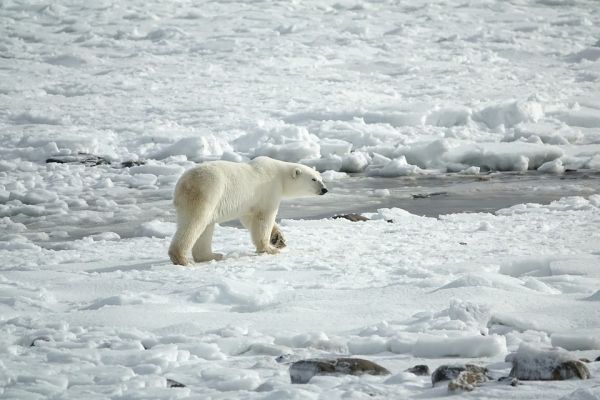How are warming temperatures and a loss of sea ice affecting polar bears and their marine mammal prey in the Arctic? A York University-led research team used a novel approach to the question by monitoring what polar bears eat across Nunavut and where they are catching their prey.
They found that polar bears can be used as indicators of environmental shifts and highlight how these changes are disturbing the normal distribution of marine mammal prey populations in the Arctic.
The researchers, including Faculty of Science PhD Candidate Melissa Galicia, who led the research, and Professor Gregory Thiemann of the Faculty of Environmental and Urban Change, have found polar bears, originally thought to eat mainly ringed and bearded seals, are actually flexible eaters. They will eat what’s readily available and this makes them ideal as a monitoring tool to track environmental changes in the Arctic.
“Polar bears need the sea ice to hunt. When there is a reduction in the sea ice, they’re hunting less or they’re potentially hunting different prey species,” says Galicia. “Prey species, like whales and seals, also need certain habitat conditions and because of environmental changes in the Arctic, some marine mammals, such as prey species of bears, are redistributing. You’re getting an increase in more sub-Arctic species, like killer whales for instance.”
Read more at York University
Photo Credit: mtanenbaum via Pixabay


